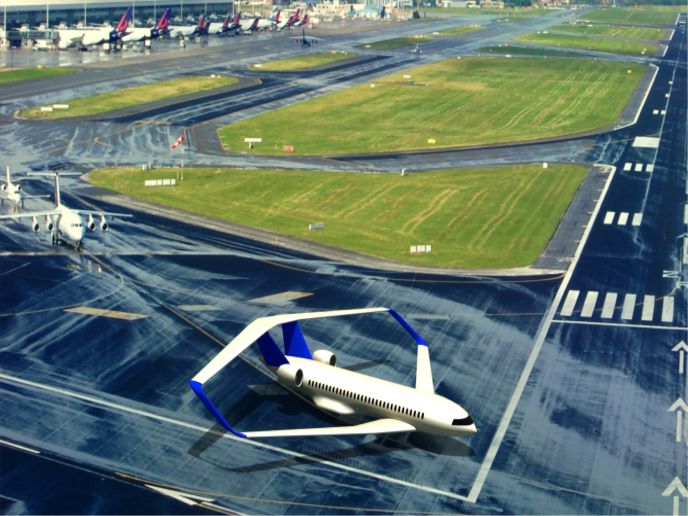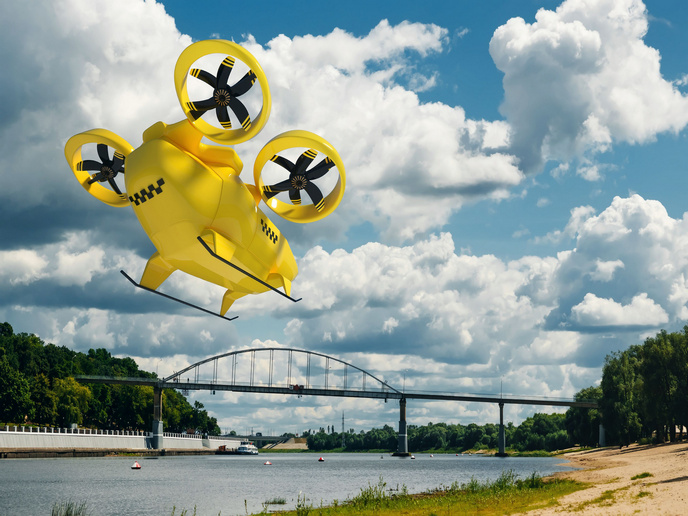Box wing design for more efficient aircraft
We’re in 1924. Ludwig Prandtl, a German engineer considered as the father of aerodynamics, introduces the world to a new idea of his: the box wing. Compared to the conventional airplane with two separate wings we’ve all come to know and board, the box wing is supposed to maximise the span efficiency of airplanes. And the more span efficiency, the less drag and fuel consumption. Almost 100 years later, box-winged airplanes are still nowhere to be found despite years and years of extensive research and development. But the potential benefit has been confirmed. According to some of the latest research efforts by the University of Pisa, the box wing could reduce fuel consumption per passenger by 22 %. “The PrandtlPlane (PrP), which received its name from the University of Pisa in honour of Prandtl, can act as a force multiplier in the search for climate-neutral solutions. If it can reduce fuel consumption by almost one fourth with today’s propulsion systems and fuels, one can only imagine the benefits for hybrid-electric or hydrogen propulsion systems,” says Vittorio Cipolla, assistant professor at the Civil and Industrial Engineering Department of Pisa University and coordinator of PARSIFAL (Prandtlplane ARchitecture for the Sustainable Improvement of Future AirpLanes). PARSIFAL embodies the continued commitment of the research community to turn Prandtl’s dream into reality. From May 2017 to July 2020, the project team assessed the impact of introducing PrP to aircraft like the Boeing 737 and Airbus A320, which fall into the C category of ICAO requirements for aircraft.
A thorough benefit assessment
The project assessment was conducted from the standpoint of technical feasibility, by means of design activities and high-fidelity analyses focusing on aerodynamics, flight mechanics, structures, propulsion systems, as well as impact studies. The latter specifically focused on how the replacement of conventional wings by PrP could impact CO2 and other atmospheric emissions, global warming potential, perceived noise levels, ground operations and return on investment for airlines. To ensure an accurate comparison between box wing and standard design, the project team implemented all of their analysis models into a multidisciplinary design framework suitable for both conventional and PrP architectures. “The box-wing configuration enables us to generate more lift within the same wingspan limit, which is the necessary requirement to transport a larger number of passengers per flight without exceeding ICAO class requirements. The estimated fuel per passenger-kilometre reduction, evaluated by adopting the same high-fidelity approaches to both conventional and PrP architectures, ranges from 10 % to 22 % depending on mission requirements. Similar analyses are ongoing for the regional aircraft sector within the Italian research project ‘PROSIB’, where the PrP is combined with the hybrid-electric propulsion,” Cipolla explains. Besides the reduced fuel consumption, PARSIFAL partners found that PrP would reduce the global warming potential of class C airplanes by about 17 % in 20 years. Moreover, the increased passenger capacity of PrP airplanes (an additional 100+ seats) means fewer flights and less overall noise. Passengers’ wallets stand to gain, too: According to Cipolla, the cost per available seat-kilometre would be reduced by up to 12 %. Although the project has come to an end, Cipolla and his team continue to investigate specific design aspects related to PrP. Initially, they did hope that the first PrP would take off as early as 2035. But, as with so many things, COVID-19 is likely to delay the outcome.
Keywords
PARSIFAL, box wing, Ludwig Prandtl, fuel efficiency, aircraft, aerodynamics, PrandtlPlane







